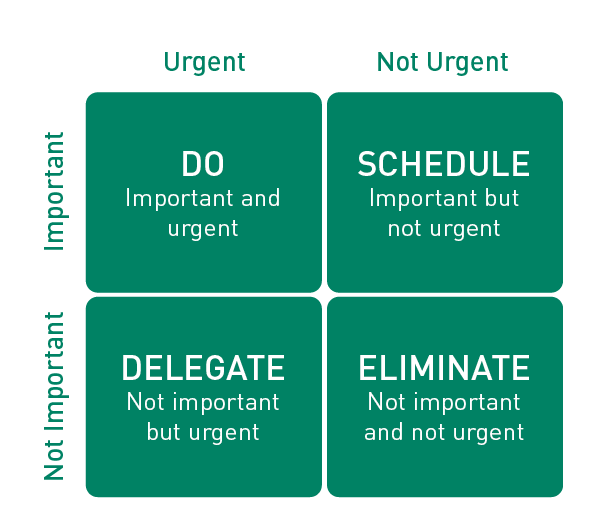Introduction
Work-life balance—achieving 50/50 equilibrium between your professional and personal lives. For a long time, it’s been a goal (often elusive) for many employees. In today’s technologically advanced world, it’s easy to have both sides intersect as you can take home to work and vice versa. You might receive and respond to emails at night in the middle of family dinner or pause your work on a project to go to a doctor’s appointment during the workday. Trying to balance every aspect of our lives—jobs, family, health and fitness, leisure, charitable activities, and more—can be a stressful effort, and the concept of work-life balance is wearing thin. Instead, work-life blend is becoming the new standard, putting less pressure on people to achieve a balance.
What is Work-Life Blend?
Work-life balance implies we should carve out specific (equal) time for work and for life, and the two should rarely or never intersect, or else it seems unproductive or unhealthy. Work-life blend instead means you don’t always have to designate set time, energy, or focus for just work or just life, but that you can ultimately find fulfillment in a healthy, steady incorporation of both. Work-life blend has become a more realistic approach as we take time during one aspect to tend to the needs of the other.
More and more employees are adopting work-life blend due to its fluid nature. According to National Car Rental’s third annual State of Business Travel survey, 65% of respondents believe it is unrealistic to draw a line between their professional and personal lives, and over 50% are now blending their work life and personal life, rather than trying to separate them.¹
Read on to learn how to create and practice work-life blend, and what you can do to help your employees do the same.
Setting Priorities
If you’re blending the two sides of your life, you need to know what elements comprise both. That means taking time to determine what’s important and putting them in order of priority. Create lists for both your professional and personal lives, noting the time that might be required to perform each, whether it’s a short-term or long-term activity. You can even schedule them on one calendar to keep you on track. This will give you an idea of things that you have to tend to immediately or those that can get your attention later.
A good way to help you prioritize activities for your home self and work self is to apply the Eisenhower Box or Matrix. Grab a piece of paper and split it into four equal quadrants. Label each quadrant with one of the following: Not urgent and not important; Urgent, but not important; Important, but not urgent; and Urgent and important.² Combine the items of your professional and personal lives into one matrix to give you a general snapshot of your priorities. Naturally, these items will change over time, so you can add, remove, and adjust accordingly. But keep yourself in check on achieving them.
Setting priorities will help you fit the pieces of the puzzle together. Remember that you can’t do it all—your work-life blend is a process and over time, it’ll all come together.
 Eisenhower Matrix
Eisenhower Matrix

Using Flexible Schedules/Remote Work
Remote work and flexible schedules have become more widespread to adapt to the changing needs of the workforce. Telecommuting allows employees to work from virtually anywhere, while flexible schedules let them work outside of the typical 9 to 5, 40-hour work week. Both systems are very conducive to work-life blending because they create the time people often need away from work to attend to personal matters. For example, if you need things fixed at your house, you can be present for repairmen to do the work, and even be able to perform duties of your job at the same time. If the task at home requires your attention for a moment, it’s easy to switch back to working afterward. On the other hand, if you have a flexible schedule, you can adapt it to fit your family’s needs or even your own personal needs like fitness, self-care, or charitable initiatives.
Flexible schedules and remote work lend to increased productivity. For one, you avoid rush hour and that time can be better spent focusing on either a work or life responsibility. Another plus for flexible schedules is the ability to do work when you’re most productive. You may get the bulk of work done before noon if you do early mornings, allowing you to use the afternoon for other activities. Offering employees the option for either mode of work gives them a sense of independence as they feel they have full control over their work and personal lives, leading to reduced stress that could be caused by conflicting responsibilities.
Remote work can be very helpful for you and your employees as you seek to achieve work-life blend. And while there are many benefits, there are also hurdles that can negatively impact your virtual employees’ engagement. Read our guide on managing a mobile workforce to learn about the challenges of telecommuting and the strategies to address them.

Improving Benefits
Your benefits package plays an important role in encouraging work-life blend. Does it cater to the needs of all demographics, from Gen Z to baby boomers, from interns to executives? Offering a wide variety of benefits shows your workforce that you support them and the varied aspects of their personal and professional lives. If you offer fitness classes during the day, you can help your people achieve their health goals while at work. Another valuable benefit is paid time off specifically to participate in charitable activities. Aside from boosting morale, this also helps employees’ personal development. Or, you can offer tuition reimbursements to help employees gain knowledge to better perform their jobs and to encourage their professional growth.
Offering a robust benefits package helps your employees meet the demands of their life outside of work. Aside from the positive effect of promoting work-life blend, you’ll find that your employees are happier and more engaged. And when that happens, your company will experience less absenteeism, lower turnover, and higher productivity, all of which contribute to a healthier bottom line.
Setting the Example from the Top
Work-life blend should be encouraged by leaders, from the C-suite to team managers. Aside from offering resources to support it, leaders should also practice it themselves so employees can follow their example. Leaders must act as role models, publicly engaging in positive practices when it comes to integrating their work and home lives. Actions like taking paid time off and fitness breaks, participating in volunteer activities during the workday, or showing up for team happy hour all signify to your people that your company takes work-life blend seriously.
Work-life blend looks different for every individual. An important part of helping your employees achieve work-life blend is communication between managers and their direct reports about what effective work-life blend is for them. It is important for conversations to take place so that managers can understand their subordinates’ priorities to get an idea of the resources they may be able to provide to help them achieve work-life blend. Because no two people are the same, plans may vary and it’s up to managers to coordinate them in such a way that it does not negatively affect work output.

Conclusion
After all the years of attempting to balance our personal and professional lives, we’ve come to realize that work-life blending is not just more attainable than balance, but also more humane. There’s no denying that our work and home selves are interconnected, and attempting to forcefully separate them can ironically become a source of stress. Instead, the most effective way to manage both is to carefully and consciously blend them to meet your individual needs.
© 2020 Ultimate Software Group, Inc. All rights reserved. The information contained in this document is proprietary and confidential to The Ultimate Software Group, Inc. No part of this document may be reproduced or transmitted in any form or by any means, electronic or mechanical, including photocopying and recording, for any purpose without the express written permission of The Ultimate Software Group, Inc. No part of this document may be extracted and/or used out of the context of the full published document for any reason. This document is for informational purposes only and is subject to change without notice. Ultimate Software makes no warranties, express or implied, with respect to this document or any statements contained therein and specifically disclaims any warranties including but not limited to those for a particular purpose. This document contains or may contain statements of future direction concerning possible functionality for Ultimate Software's products and technology. Ultimate Software disclaims any express or implied commitment to deliver functionality or software unless or until actual shipment of the functionality or software occurs. UltiPro is a registered trademark of The Ultimate Software Group, Inc. All other trademarks referenced are the property of their respective owners.




